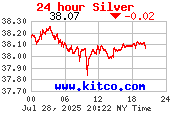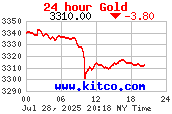According to the Austrians’ theory (despite their name, which dates back to the early twentieth century, today’s “Austrians” are mostly found in the United States), boom-and-bust cycles are, at root, not the consequence of rampaging greed, psychological mania, or insufficient regulation, but are the inevitable consequence of an excess of bank credit, which is the result of Federal Reserve policy.
The primary means of Fed expansion of the money supply is through buying government bonds on the open market. When it buys these bonds, the Fed pays for them by adding credit under its member banks’ accounts. These credits are created out of thin air; they are newly created money. It is through these “open market operations” that the Fed controls interest rates. Member banks, in turn, are only required by law to keep a small fraction of their deposits in reserve, and are free to lend out the rest, which multiplies the effects of the Fed’s purchases.
Interest rates are critical signals that tell businesses how much saving is available for investment in capital projects. When savings rates are low, the resulting high interest rates signal consumers’ preference for present over future consumption. Conversely, when savings rates are high, the resulting low interest rates show a preference of future consumption and a pool of savings available for investment. The low rates might then prompt business to invest in new projects, such as a new factory, subdivision, or online pet supply store. This is how the price of credit is set by the free market, resulting in the “natural” interest rate.
But when the Fed creates artificially cheap credit, businesses are misled into believing that riskier projects with more distant prospects of paying off will be profitable. A cluster of such projects will lead to a classic boom period, such as the dot-com bubble of the late 1990s. Cheap credit also leads to asset bubbles, such as the dot-com era stock market and the housing market in latter years. The distortions in the economy are exacerbated when consumers, believing themselves to be wealthier than they really are, decrease their savings and increase consumption.
Of course, there are also psychological aspects of the bubble economy that feed into the general irrationality, but this is more accurately seen as a follow-on effect of easy-money policies rather than as the cause of the bubbles.
The Fed can keep feeding the boom with continued low rates, but this only creates further mal-investments, and will deepen the inevitable crash when the irrationality of the boom-era projects becomes evident. When the party ends, bank credit contracts, unprofitable projects are liquidated, and economic resources shift to productive uses. Recessions, then, are a painful but necessary stage in the economy’s return to health.
The loose credit policies of the Greenspan years have led to consequences that fit in well with the Austrian view. During Alan Greenspan’s reign as chairman of the Fed, he maintained a loose monetary policy punctuated with generous injections of extra cash in times of crisis, such as the Asian financial crisis of 1997 and the collapse of the hedge fund Long Term Capital Management. This easy credit fed into the excesses of the dot-com era, which led directly to a stock market crash and recession in 2001.
Federal Reserve policy was also instrumental in inflating the housing bubble and creating the current recession. As the economist Mark Thornton points out, Alan Greenspan pushed interest rates down to unprecedented levels in the wake of the 9/11 attacks, which resulted in historically low mortgage rates. The fallout of the dot-com collapse led to massive losses, but the recession was mild, as the Fed’s easy money pumped up a real estate bubble just as the NASDAQ bubble unwound. The low rates led to increased borrowing for homes on a massive scale. House prices soared, but when reality eventually reasserted itself, they fell sharply, a process which culminated in last fall’s financial crisis.
Read the rest.
Who Let The DOGE Out? With Guest David Gornoski
-
The post Who Let The DOGE Out? With Guest David Gornoski appeared first on
LewRockwell.
5 hours ago




No comments:
Post a Comment